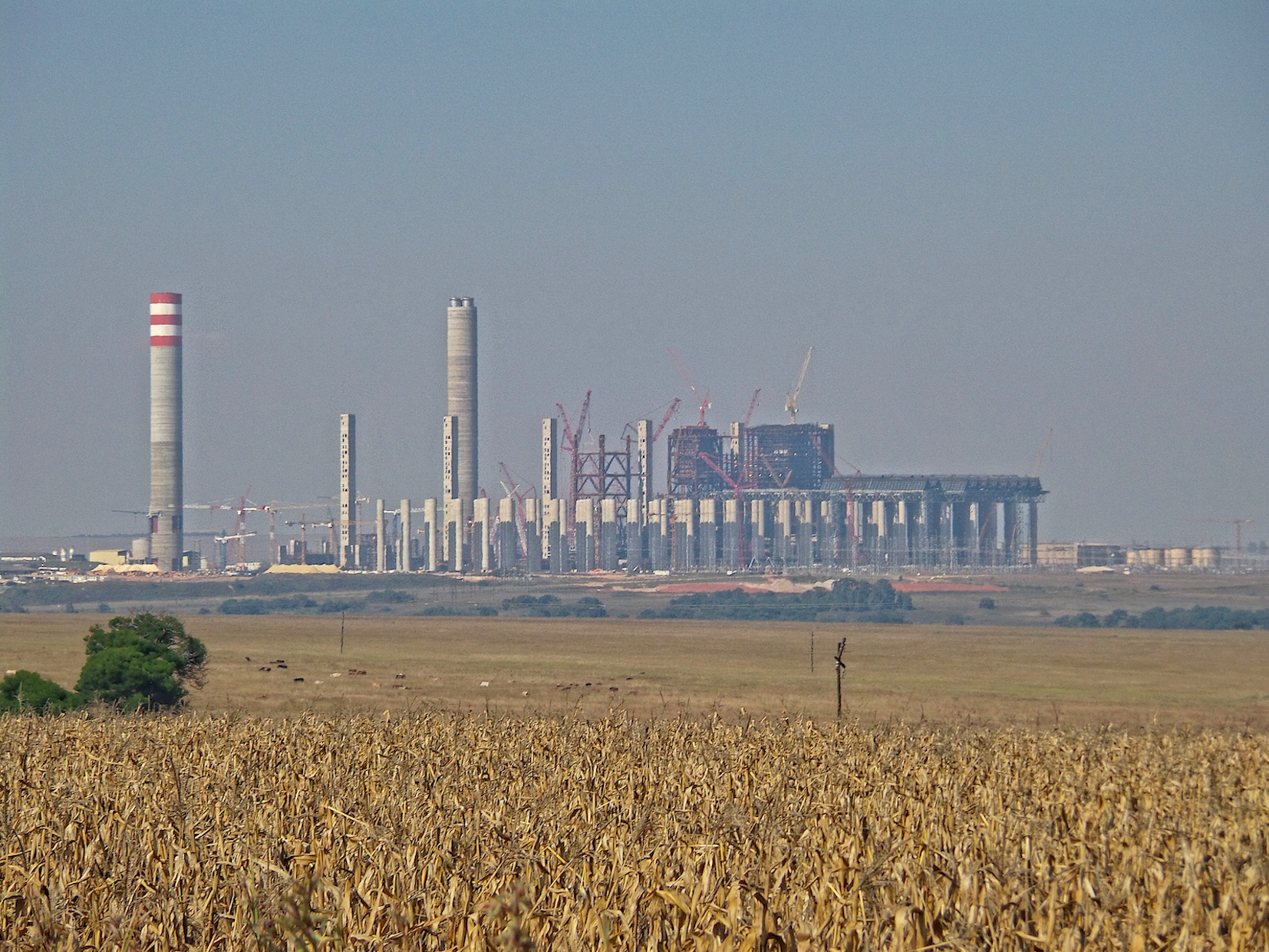Eskom’s Kusile power plant has been plagued with issues since its construction commenced in 2008. The initial plan was for the plant to take six years to complete construction of six operational units. Sixteen years later, only five of the six units have become operational.
The delays and issues are numerous, but one of the more significant examples is the failing of its sulphur dioxide mitigation systems.
Flue gas desulphurisation systems are designed to remove about 90% of the sulphur dioxide present in the emissions from the power plant, as well as toxic chlorides and fluorides. Kusile was to be the first of Eskom’s power plants to feature such a system.
International standards
The main reason for the inclusion of the flue gas desulphurisation systems was to meet international standards for health and safety as described by the World Health Organization (WHO). The reason for these standards is because sulphur dioxide is a highly toxic substance. It can cause symptoms that include difficulty breathing, burning eyes and discomfort. It also can pollute local water supplies and arable land.
Eskom’s decision to include a flue gas desulphurisation system, while good in theory, fell apart in practice. Upon implementation of the system, it promptly presented issues. The system had not been clearing out the sulphur as intended, which led to a build up of sulphur and ash products on the side of the chimneys. This led to the collapse of the first operational unit’s chimney and a shutdown of the second and third units, five years after the construction of the first unit.
As a result of the shutdown, Eskom asked the Department of Forestry, Fisheries and the Environment to be allowed to continue operations without the flue gas desulphurisation system. In June 2023 Eskom was granted permission to bypass the system and to continue operations while performing repairs to the first three units. Eskom predicted low impacts from the bypassing of the system, but their measures severely underestimated the impact.
Impact of emissions
The Centre for Research on Energy and Clean Air estimates that a year’s worth of emissions at peak capacity without the system – more than 330,000 tons of sulphur dioxide – would correspond to detrimental health effects equivalent to a death toll of about 900 people a year, along with damage to local wildlife and the pollution of water and land.
This starkly contrasts with Eskom’s estimates of just 10 fatalities, even though both agree on the quantity of sulphur dioxide to be emitted.
These estimates are far from an exact science, but even if the real figure lies closer to Eskom’s than to the Centre for Research on Energy and Clean Air’s, the health effects are nonetheless concerning.
For reference, it was found that for 10µg/m³ (cubic micrograms) of exposure for a time period as short as 24 hours, there was a noticeable change in the number of fatalities in an area. The WHO recommends that a person should not be exposed to a concentration above 45µg/m³ of sulphur dioxide for more than a day. With 330,000 metric tons of sulphur dioxide per year and using a highly simplified dispersion model, the WHO’s recommended limits are exceeded for a radius of 45km around the plant.
Besides health effects, infrastructure may be at risk. Dr Neil Stacey, of the School of Chemical and Metallurgical Engineering at Wits University, had the following to say:
“Sulphur dioxide emissions have been shown to be corrosive to both steel and concrete, which of course has broad effects. In 2021, researchers from my university conducted a study mapping steel corrosion rates at sites throughout the country, and found heightened corrosion rates in proximity to sulphur-dioxide emitting industry.
Accelerated corrosion
“Accelerated corrosion implies more frequent repair and replacement in industry, with commensurate economic costs. The effects on informal uses of steel, such as steel roof sheets in makeshift housing, are less predictable but should not be discounted. Even car parts will deteriorate more rapidly in these environments.”
While sulphur dioxide is the main cause for concern, Eskom’s analysis was done solely for sulphur dioxide, without accounting for other dangerous substances. The Centre for Research on Energy and Clean Air found that without the flue gas desulphurisation system, about 24,000kg of mercury would be emitted. Mercury is a dangerous pollutant with cognitive impacts, and the centre’s worst-case scenario estimates are that these emissions could result in quite a lot of additional fatalities. Again, we have to treat mortality estimates with great caution, but they are nevertheless concerning.
Eskom has permission to bypass the flue gas desulphurisation system until 31 March 2025, which means that the power produced at Kusile continues to come at a high price not accounted for by Eskom, and borne primarily by society’s most vulnerable. DM
Nidal Boorany is a biomedical engineering student at the University of the Witwatersrand.
First published by GroundUp.




